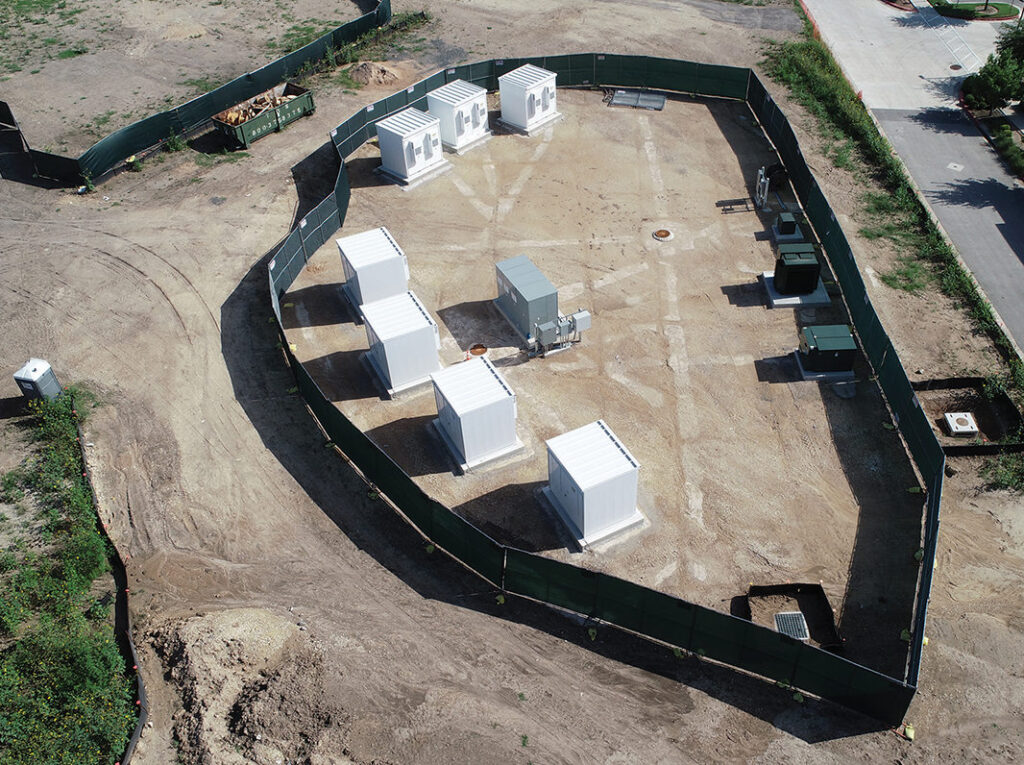PG&E’s Elaboration on Collaboration at Utility Analytics Week

Tom Martin, manager, Grid of Things, at Pacific Gas & Electric provides an interesting perspective on the value he and his team have been gaining from their collaborations with fellow Utility Analytics Institute members. A key focus for Martin’s work at PG&E involves how best to employ new technology and analytics to support the electrical grid as it integrates millions of smart meters, hundreds of thousands of solar rooftops, tens of thousands of electric vehicles, and all of the potential interconnected appliances and technologies in the home, while also optimizing PG&E’s power generation, monitoring, and delivery networks.
PM: What do you think is the most valuable thing for the utility industry community when it comes to analytics-related collaborations and discussions you have at Utility Analytics Institute meetings?
TM: The biggest thing which makes these collaborations so valuable for utilities is the wider and deeper perspectives our collaborations create. This is something we see in new ways every time we participate. We expect to see it again at the upcoming meeting at UAI Utility Analytics Week, and we saw it at UAI’s Partner Summit earlier this year.
Fundamentally there is a lot of change happening in our space, and within any one utility the changes may seem to be small or may appear less pronounced due to the way that they can be spread across different pockets of the organization. But what these UAI events allow us to do is to bring together all of the different people in the industry who are focused on how to best utilize advanced analytics in exciting and important ways. We are using analytics to help make our industry safer and make the services we provide more reliable, affordable and cleaner for our customers.
The awesome thing here is the fact that within any one utility you might not have critical mass to move at breakneck speed within the analytics space, but with the sort of targeted events UAI provides, you do find you have the critical mass you need, by engaging with a lot of other innovative utilities.
PM: Is it mostly functionally focused, where like-minded utility folks in similar departments meet, or does it cut across silos, for example where you could have a Customer Analytics person work with an Asset Health person on improving how they address a shared analytics challenge?
TM: That is a great question, and I would say there is a kind of mix where both are in play.
On one side, some of what is going on does involves “siloed” deeper dives into specific use cases. This makes sense within the utility space since there are niche technical topic areas which a lot of different people are focused on. For example we want to know how we can best use analytics combined with data from sensors and data from our assets to do predictive maintenance and extend asset life. So there are a lot of use cases where we are attacking problems from different angles, and by pulling people together who are focused and interested in addressing those types of use cases, you can get deep really fast and feed off of each other and approach problems from various standpoints, which helps drive results.
On the flip side there is a kind of “up-leveling” opportunity. There are strategic problems we explore with fellow utility participants at these events. For example you might want to determine how best to set up data scientists organization within your utility. Do you want your data scientists spread across multiple lines of business within the utility, or does it make more sense for them to be located in a centralized group and then farmed out in specialized roles, like semi-independent in-house consultants? Determining the impacts and weighing pros and cons of things at a strategic level in this way can be just as crucial as figuring out approaches to address specific use cases.
At these UAI conferences we get to focus with colleagues across these two very different sorts of issues and bring to the surface a great deal of value.
PM: Given how big PG&E is, do you do most of this type of analytics work with in-house resources? Or do you find you still need to bring in outside resources for some special expertise?
TM: Well, I’d say yes and no. While there certainly are some tactical use cases where you’ll want to find a partner within the industry, generally you will want to have a mix. And the approach we have taken at PG&E, and the approach taken at a number of other utilities, involves finding a specialized partner who can also help us develop as we are growing some of these skill sets in house.
One example I will be talking about at UA Week involves a collaboration between PG&E and TROVE – Predictive Data Science. For a quick background, in California we have a program called Electric Program Investment Charge, or EPIC. EPIC provides funding that allows utilities to do cutting edge technology demonstrations for improving the electric grid from a safety, affordability, and reliability, standpoint as well as advancing California energy policies cost effectively. EPIC is really a big help in enabling us to push boundaries and achieve new cutting edge breakthroughs.
More importantly, this sort of program is an example of ways we are bridging the gap that previously existed between pre-commercial technology and the utility scale technology demonstration that is needed before everyone is ready to buy it as a commercial off the shelf product. It is an arrangement that bridges that gap in the technology adoption curve.
PG&E started the project with an RFP and we identified Trove as a partner having really good specialized predictive loading analytics. The project involves using predictive methods we can apply in areas where we do not have real time sensing equipment, but where we still want to develop accurate models for real time loading on the circuit. With the solution we’ve developed with Trove under the EPIC project, we can approximate the load in real time by taking smart meter data and adding in weather data and solar generation assumptions, factoring in load losses and the like, and arrive at good estimates even for customers who might not have smart meters.
The solution we are putting includes algorithms to provide essential visibility about loading in real time to operations and operating engineers. We plan to keep building on this, but at the same time we recognize that Trove has a great position in this niche market, based on their years of experience, so we brought them in on the project and co-developed this algorithm working with them.
PM: Excellent. That is powerful and wide-ranging. I think about how the level of insulation in those homes can vary and the homeowners in those homes may crank up their air conditioners when a heat wave comes, while other homeowners with good insulation and who are not as wasteful won’t. You’d end up wanting to track when these different types of customers move within your service territory, and be able to tailor different offerings to them, right?
TM: Yes and that is where Trove’s secret sauce is! By tracking a lot of data about customer types and attaching load profiles to customers and tracking them in ways associated with their impacts on the grid, we draw great value from the resulting framework. So we at PG&E do not have to reinvent the wheel, and we get to leverage their knowledge and solving these types of different components and apply them to new problems.
PM: And can this sort of program with EPIC be commercialized for you neighboring utilities too?
TM: Yes, the goal of EPIC is to provide value for the state of California and its utility customers and anything done through the EPIC program is shared across California’s three investor-owned utilities and the California Energy Commission. We also share learnings from the EPIC projects more broadly through workshops, white papers, and conferences like Utility Analytics Week. Additionally, there is also an opportunity for other utilities to leverage this more directly, with some sort of licensing agreement in a number of different ways. The idea with EPIC is that we develop cool things, and the customers get to benefit by our sharing across our neighboring IOUs in California, and then where the opportunity is right that intellectual property can be sold or licensed or somehow distributed to other utilities who also want to leverage it. The funds can then be fed back into the program to further benefit utility customers in California.
PM: I think about the community aspect of utility collaborations like this, for example with applying the scenario you just described for customer analytics, to the earlier example you gave of real-time asset data. If you get more utilities providing operational data on assets like transformers, couldn’t those utilities be providing value back to the overall effort, by increasing the population of assets you’d have data on? I do not have a crystal ball or insight into how a market can be created. But down the road shouldn’t we find greater value by sharing data more widely, to help that sort of market get created?
TM: Absolutely. For the data-specific sharing I think a lot of utilities recognize there may be an opportunity here but are unsure how to best share the data but while still making sure protect privacy of data and the privacy of each utility’s customers. A lot of utilities are still trying to figure out how to address this and while still figuring out how to maximize the value of data so we can use it to continuing building analytics that support a safer, more reliable, more affordable, and cleaner grid. But there is still a huge opportunity for utilities to come together at Utility Analytics Week to share problems, results, and analysis that has been done. Because of the geographic differences between utilities, there are knowledge sharing opportunities that don’t exist in other industries. Utilities are able to collaborate in ways you’ll never see CVS, Walgreens and Rite-Aid sharing their data. It allows benefits for utilities and their customers.
—
PG&E’s Tom Martin will be presenting at UA Week in a session titled “Enhanced Grid Management Through Real-Time Analytics.” Martin serves as a product manager and people leader to strategically align internal/external stakeholders and deliver new analytics and situational intelligence products for Pacific Gas & Electric.





